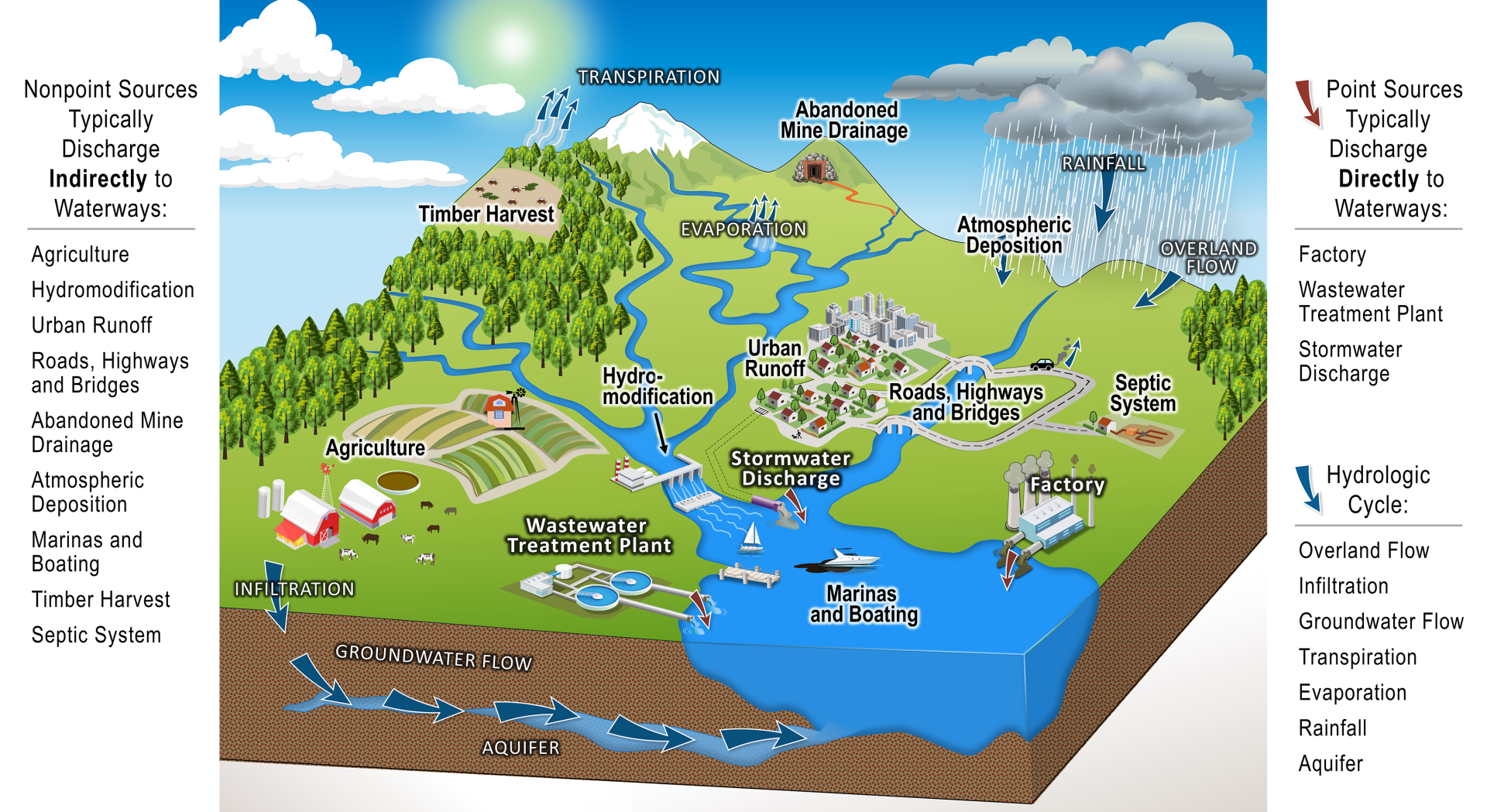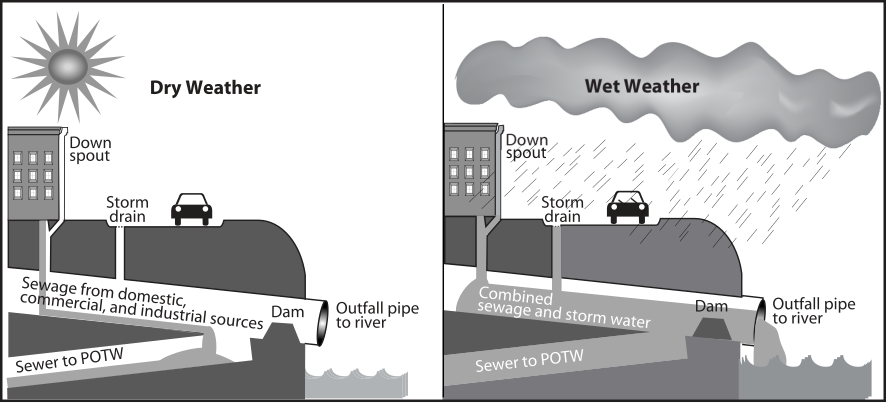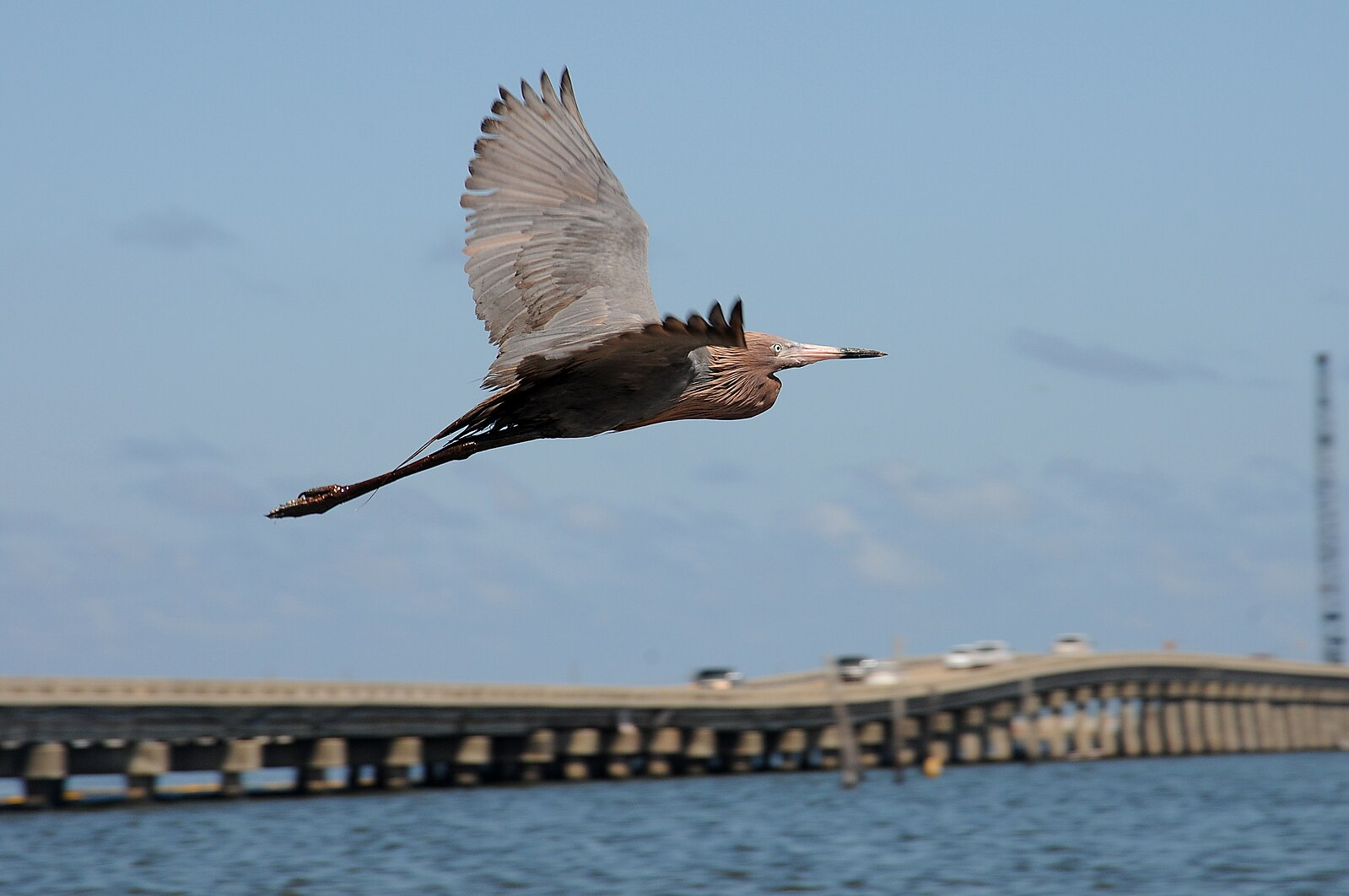IB Syllabus focus:
‘Sewage, agricultural runoff, industrial effluent, urban runoff, solid waste and oil spills damage waters; study a named case’s sources, impacts and management.’
Water pollution arises when harmful substances enter aquatic systems, altering their chemical, physical, or biological quality. It threatens biodiversity, ecosystem stability, and human well-being across the globe.
Major Sources of Water Pollution
Sewage
Untreated or inadequately treated sewage introduces organic matter, pathogens, and nutrients into rivers, lakes, and coastal waters.
Organic waste increases biological oxygen demand (BOD), depleting dissolved oxygen.
Pathogens can cause diseases such as cholera and dysentery.
Nutrient enrichment triggers eutrophication, leading to algal blooms and ecosystem stress.
Biological Oxygen Demand (BOD): The amount of oxygen required by microorganisms to decompose organic matter in water, measured in mg O₂ per litre.
Agricultural Runoff
Agriculture is a significant contributor to non-point source pollution because pollutants are spread across large areas.

Illustrated watershed showing non-point sources (agriculture, urban runoff, roads, forestry) and point sources (wastewater treatment plants, factories), alongside key hydrologic flows. The diagram clarifies how different activities introduce pollutants to surface and groundwater. Labels are concise and suitable for IB ESS SL level. Source.
Fertilisers supply excess nitrates and phosphates.
Pesticides introduce toxic chemicals that bioaccumulate.
Livestock waste adds pathogens and nutrients.
Industrial Effluent
Factories often discharge effluent containing heavy metals, synthetic chemicals, and heat.
Thermal pollution raises water temperature, lowering dissolved oxygen and stressing aquatic organisms.
Toxic metals like mercury and cadmium accumulate in food chains, harming predators and humans.
Urban Runoff
Cities generate large volumes of stormwater runoff, washing oil, litter, heavy metals, and other pollutants from roads and pavements.
Impermeable surfaces increase flow, carrying pollutants rapidly into waterways.
Overflowing storm drains may mix with untreated sewage during heavy rainfall.

A simplified combined sewer schematic shows dry-weather flow to treatment and wet-weather overflow to a river through an outfall. The diagram reinforces how urban infrastructure can become a direct pollution source during storms. Labels are minimal and aligned to IB ESS scope. Source.
Solid Waste
Improperly disposed plastics, packaging, and household refuse enter rivers and oceans.
Plastics persist for centuries, fragmenting into microplastics that infiltrate food webs.
Large debris entangles marine life and damages habitats.
Oil Spills
Marine transport and offshore drilling pose risks of oil spills.
Oil coats bird feathers and fish gills, impairing survival.

A reddish egret with plumage matted in oil demonstrates how spills reduce waterproofing and insulation, increasing hypothermia and mortality risk. This visual exemplifies wildlife vulnerability to hydrocarbon contamination. The page includes additional incident context but the core concept is the physical impact of oil on birds. Source.
Slicks block sunlight, disrupting photosynthesis in aquatic plants and phytoplankton.
Long-term toxic effects persist in sediments and food chains.
Impacts of Water Pollution
Ecosystem Impacts
Reduced oxygen levels cause hypoxia, killing fish and invertebrates.
Toxins bioaccumulate, altering food web dynamics.
Habitats such as coral reefs and wetlands are degraded by sedimentation and chemical inputs.
Human Health Impacts
Contaminated drinking water spreads infectious disease.
Heavy metals and synthetic pollutants can cause cancer, neurological damage, and reproductive disorders.
Economic reliance on fisheries, tourism, and agriculture suffers when water is polluted.
Socio-Economic Impacts
Loss of clean water raises treatment costs.
Polluted water undermines livelihoods dependent on fishing and aquaculture.
Communities face inequity, as poorer populations often lack alternatives to contaminated sources.
Key Processes in Pollution Pathways
Infiltration and Transport
Pollutants applied on land may infiltrate soil and percolate to groundwater, or be washed by surface runoff into rivers.
Bioaccumulation and Biomagnification
Bioaccumulation: The gradual build-up of substances, such as pesticides or heavy metals, in an organism over time.
Biomagnification: The increasing concentration of toxic substances at higher trophic levels in a food chain.
These processes make top predators, including humans, especially vulnerable.
Case Study Requirement
The syllabus emphasises studying a named case to link theoretical knowledge with real-world impacts. When reviewing such a case, focus on:
Primary sources of pollution (e.g., untreated sewage, industrial effluent).
Ecological consequences (oxygen depletion, species decline, habitat loss).
Human consequences (disease outbreaks, economic losses).
Management responses (treatment facilities, legal frameworks, restoration projects).
Management Considerations
Effective responses to water pollution often involve:
Prevention: Reducing waste generation, improving agricultural practices, and adopting cleaner technologies.
Regulation: Enforcing effluent standards and monitoring compliance.
Remediation: Restoring ecosystems through aeration, bioremediation, or sediment removal.
Equity: Ensuring that all communities, especially vulnerable groups, gain access to safe water and benefit from pollution control efforts.
FAQ
Point source pollution comes from identifiable, localised sources such as discharge pipes from factories or sewage treatment plants. These are easier to regulate and monitor.
Non-point source pollution originates from diffuse sources across landscapes, such as fertiliser runoff from farmland or oil residues washed from roads. It is harder to control because inputs are widespread and variable.
Oil spills not only coat organisms but also disrupt food chains. Hydrocarbons reduce phytoplankton productivity, limiting energy for higher trophic levels.
Over time, oil residues accumulate in sediments, entering benthic food webs. Bioaccumulation and biomagnification then expose predators, including humans, to long-lasting toxins.
Developing countries often lack advanced sewage treatment systems, leading to higher levels of untreated waste entering waterways.
Inadequate infrastructure for safe drinking water means communities are more exposed to waterborne diseases.
Economic reliance on fisheries and agriculture makes pollution particularly damaging to livelihoods and food security.
Industrial facilities may discharge heated water, raising temperatures in rivers or lakes.
Consequences include:
Reduced dissolved oxygen levels.
Altered species composition, as sensitive organisms cannot tolerate higher temperatures.
Accelerated metabolic rates in fish, increasing oxygen demand while reducing supply.
Stormwater systems can reduce contamination by filtering or diverting runoff before it enters waterways.
Techniques include:
Constructed wetlands and retention basins to trap sediments and pollutants.
Permeable pavements to increase infiltration and reduce surface flow.
Green roofs and vegetation strips to absorb rainfall and minimise pollutant load.
Practice Questions
Question 2 (5 marks)
Explain how different sources of water pollution can impact both human health and socio-economic systems.
Mark scheme:
Up to 2 marks for explanation of impacts on human health:
Contaminated drinking water spreads diseases (cholera, dysentery). (1 mark)
Toxic substances such as heavy metals cause cancer, neurological damage, or reproductive issues. (1 mark)
Up to 2 marks for explanation of socio-economic impacts:
Polluted water raises treatment costs. (1 mark)
Livelihoods such as fisheries, aquaculture, and tourism are undermined. (1 mark)
1 mark for linking specific sources of pollution (e.g., sewage, industrial effluent, oil spills) directly to these health or socio-economic impacts.
Question 1 (2 marks)
Identify two major sources of water pollution and briefly describe how each affects aquatic ecosystems.
Mark scheme:
1 mark for correctly identifying a valid source of water pollution (e.g., sewage, agricultural runoff, industrial effluent, urban runoff, solid waste, oil spills).
1 mark for a clear description of how that source impacts aquatic ecosystems (e.g., sewage increases BOD and depletes oxygen; agricultural runoff causes eutrophication; oil spills damage bird feathers and gills).

